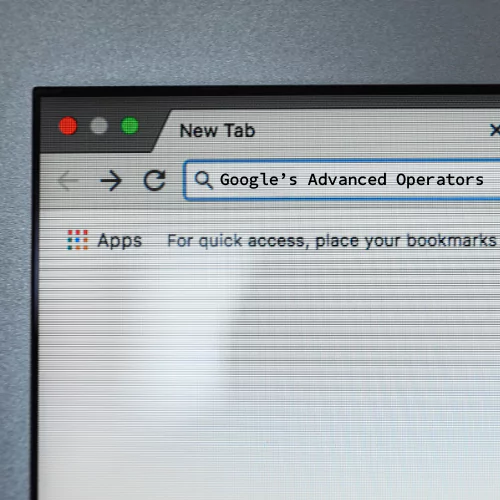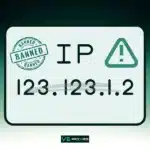Google is a powerful tool for surfacing a wealth of information available on the internet. Yet, its potential goes beyond just entering a search query and scrolling through the results. If you’re a business owner, a researcher, or a developer, scraping Google’s search results could offer some intriguing possibilities. In this guide, we will discuss the answer to “How to scrape google search results” in detail.
“Scraping” refers to the act of gathering specific pieces of information from websites and storing it in a useful way, such as in an excel sheet or a database.
Table of Contents
- What are Google SERPs and Why Do They Matter?
- Before You Start Scraping Google Search
- Step-by-Step Setup For Scraping Google Search Results
- Advanced Skills: Understanding Google’s Advanced Operators
- Advanced Skills: Maintaining Web scraping etiquette
- Legal And Ethical Considerations Of Scraping Google
- Solving CAPTCHAs And Avoiding IP Blocks
- Leveraging Python For Automated Google Scraping
- API And Proxy Use In Scraping Google Search Results
- Is It Legal To Scrape Google Search Results?
- What Are Some Examples Of Great Google Scraping Tools?
- What is Google Custom Search JSON API?
- Conclusion
What are Google SERPs and Why Do They Matter?
Understanding the SERP’s structure and how results are ranked and displayed is the first step to scraping Google search results effectively. Google’s SERP (Search Engine Results Page) is highly dynamic and constantly evolving, with elements such as paid advertisements, organic results, Featured Snippets, Knowledge Graphs, and more.
The term SERP is an acronym for Search Engine Results Page. While it applies to various search engines like Bing and Yahoo, its most significant use is on Google, which dominates 90% of the search engine market.
Before You Start Scraping Google Search
Planning, thinking, and choosing the right tools and technologies are crucial for a successful Google scraping experience. Let’s explore how to make informed decisions:
1. Evaluate Your Technical Know-How
Begin by evaluating your level of technical expertise. If you’re a novice who’s just exploring data scraping, it’s best to opt for user-friendly tools with a straightforward interface. However, if you have advanced coding skills, more technical tools could present opportunities for customizations and detailed data extraction.
2. Gauge the Complexity of Your Project
The complexity and scale of your project determine the type of tools you’re going to need. Are you planning a small-scale scrape or a significant project requiring considerable data extraction? The bigger the scale, the more powerful and reliable your tools should be.
3. Consider Speed and Efficiency
While selecting data scraping tools, pay attention to their speed and efficiency. You wouldn’t want to use a tool that makes you wait for an eternity to deliver results, would you? Aim for tools that provide quick results while not compromising on the quality of data.
4. Plan To Avoid Bans
Being ethical and staying within the legal boundaries is crucial in web scraping. Choose tools that respect the rules and don’t violate privacy regulations. Also, ensure the tool doesn’t overload the servers, resulting in potential bans from Google.
Google processes over 3.5 billion searches per day.

Step-by-Step Setup For Scraping Google Search Results
Scraping Google search results lets you gather vast amounts of information from the pages that show up for a specific keyword. You get to access not just the first SERP page (1st 10 results), but all other pages shown in Google results. Here are some examples of the types of data you can collect from SERPs:
- Title
- URL
- Meta description
- Date
- Ads
- Featured snippets
- Videos
- etc.
Now that you know what to scrape, here is a step-by-step guide for you to start scraping:
1. Choose Your Scraping Tool
First things first – you’ll need to select the tool that suits your needs best. Consider factors like ease of use, flexibility, and cost. Some popular choices are SerpApi, Beautiful Soup, and Scrapy. Don’t stress too much about this step – you can (and probably will) switch tools as your needs and skills evolve.
2. Tool Configuration
Next, it’s time to configure your chosen tool. This often involves specifying the URLs to scrape, but may also include things like setting up scraping proxies (to prevent your IP from being banned), determining how many SERP pages to scrape, and designing the data extraction pattern.
3. Data Extraction
Now the real work begins – extracting the data. With the right tool, this can often be as simple as defining the HTML elements to scrape and letting the tool do its thing. Make sure to test and verify the scraped data for accuracy – it’s easier to correct mistakes now than later.
4. Data Cleaning
Once you have your scraped data, it’s time to clean it up. This can involve removing duplicate entries, correcting errors, or dealing with missing values. This step is crucial for ensuring the quality of your final dataset.
5. Data Analysis
Finally, analyze your data to extract valuable insights. This could involve anything from identifying trends in search results to understanding the nature of the competition for a certain keyword. The purpose of Google data scraping is not just to gather data, but to use it to create actionable strategies and make informed decisions.
The goal is to turn data into information, and information into insight.
– Carly Fiorina

Advanced Skills: Understanding Google’s Advanced Operators
Google’s advanced search operators are special commands that you can input into Google’s search box to refine your search results. These operators can significantly aid in data scraping by letting you target specific data and filters.
For example, using the operator “site: (site url)” instructs Google to restrict search results from a specific site. Therefore, “site:example.com” will yield all searchable data from example.com.
Similarly, the operator “intitle:” finds pages with a certain phrase in the title. Hence, “intitle: web scraping” results in pages where ‘web scraping’ is part of the title. Understanding and using these operators can greatly improve the accuracy and quality of your extracted data.
Advanced Skills: Maintaining Web scraping etiquette
Maintaining Politeness Policy Web scraping etiquette dictates maintaining a ‘politeness policy’. Overloading a website with too many concurrent requests can lead to your IP Address being flagged and potentially blocked. It’s always a good idea to introduce random delays between scrape requests. Aside from preventing potential IP blocks, it’s simply the ethical approach to web scraping.
Legal And Ethical Considerations Of Scraping Google
To scrape efficiently and safely, you must understand the legal and ethical aspects involved. Remember that while scraping search results can provide useful data, there are limits to what’s acceptable. Google’s Terms of Service include a section titled “No Automated Querying,” explicitly prohibiting sending automated queries of any sort to Google’s system without express permission from Google.
Best practices to respect these rules include:
- Rate of requests: Keep your request rate reasonable to avoid seeming like a spam bot. An excessively high rate is more likely to trigger a CAPTCHA or IP block from Google.
- Use open-source tools: Instead of writing code from scratch, use reputable open-source tools like Beautiful Soup, Scrapy, and GoogleScraper.
- Rotate IP addresses: It can be beneficial to use a list of rotating proxy servers to diversify your IP addresses. This can reduce the chances of IP blocking.
Solving CAPTCHAs And Avoiding IP Blocks
Scraping Google search results can throw some curveballs, two of the biggest being CAPTCHAs and IP blocking. Let’s take a closer look at each of these issues and discuss ways to navigate around them.
Dealing With Google CAPTCHAs
If you’re familiar with web scraping, then you’ve undoubtedly come across CAPTCHAs. These are tests that websites use to tell humans and bots apart. Unfortunately for us, Google is pretty good at recognizing bot activity, mainly when it involves doing search result queries at a fast pace.
So what can you do? You’ve got a few options:
- Use CAPTCHA-solving services and proxies: Several third-party services like v6proxies, 2Captcha, Death by CAPTCHA, and Anti-Captcha will solve CAPTCHA challenges for you.
- Use a headless browser: Some tools like Puppeteer can maintain sessions and solve simple CAPTCHAs by simulating human activity.
- Slow down your queries: Implementing a delay between your requests could reduce the chance of triggering a CAPTCHA.
Preventing IP Blocks
Another major hurdle you might encounter is your IP address being flagged and blocked by Google. This typically happens when Google detects an abnormal amount of queries originating from the same IP address.
Proxy servers allow you to hide your original IP address by rerouting your internet connection through a different one. This could be an effective solution but keep in mind that you’ll need a good number of reliable proxies to make it work.
Rotating user agents is a helpful strategy too. Essentially, user agents inform servers about the ‘visitor’s’ software. By frequently switching these, your bot becomes more unrecognizable to these servers. This tactic increases your scraping success rate.
Rotating user agents involves changing the ‘user agent’ string, which is a part of the HTTP header sent by a web browser to a server. A user agent identifies the type of device and browser making the request.
Leveraging Python For Automated Google Scraping
For implementing the strategies outlined earlier in the article, Python, a premier programming language, plays a pivotal role. Python’s robust libraries enable you to automate some of the tedious aspects of this process.
Here are a few ways you can leverage Python to scrape Google Search Results effectively without getting flagged or blocked.
1- Beautiful Soup For Parsing HTML. Beautiful Soup is a Python library designed to cater specifically to those looking to perform web scraping. It helps to parse the HTML or XML documents into a readable, nicely formatted structure. This allows you to navigate and search through the syntax tree of these documents with ease, aiding in the quick and precise retrieval of data.
2- Scrapy: A Strong Web Scraping Framework Scrapy is a high-level, open-source web crawling framework written in Python. It’s not restricted to just web scraping – it can also crawl websites to extract structured data. Scrapy’s unique selling point lies in its ability to handle a range of scraping requirements, from handling data storage to processing and more, making it a one-stop shop for all your scraping needs.
3- GoogleScraper: Another significant tool to consider in this context is GoogleScraper. As the name suggests, this Python module is specifically designed for scraping search results from Google. It is capable of handling large volumes of data, making it ideal for more significant initiatives. GoogleScraper leverages several Python libraries and performs HTTP(S) requests, as well as handling Javascript and processing sessions and cookies.
Building Resilient And Reliable Google Scrapers
Building a robust and reliable scraper requires code optimization and handling potential errors smartly. Here are some practices to make your scraper more resilient:
- Error Handling: Your script should be prepared to handle exceptions and errors methodically. This improves scrapers’ reliability and reduces the likelihood of interruption.
- Code Optimization: Optimized code will speed up your scraping process. This involves strategically using advanced scraping techniques aside from regular expressions – such as XPath and CSS selectors.
API And Proxy Use In Scraping Google Search Results
APIs can take a lot of the heavy lifting of scraping google search off your shoulders. An API or Application Programming Interface, allows two software programs to communicate with each other. In simple terms, it’s like a translator between you and Google, making requests on your behalf and returning the desired results.
While APIs streamline the data collection process, proxies protect your scraper from getting detected and blocked, ensuring your scraping project runs smoothly. A proxy is like a mask for your network connection, it ensures your IP address doesn’t get noticed by Google while you’re bulk scraping. They act as intermediates, handling your requests and receiving data on your behalf.
There are different types of proxies that you can use for your Google scraping project such as residential proxies. A residential proxy stands as a midpoint between your browsing activity and the internet, essentially masking your internet presence. But the question you might be asking is – how does a residential proxy help with Google Scrape?
Well, it’s quite simple. Every time you send out a search request on Google, your IP address is noted. By appearing to come from a real home IP address, rather than a questionable source, Google is less likely to flag or block your activities. This assists in a smoother and more efficient data scraping process.
Is It Legal To Scrape Google Search Results?
Web scraping, as a process, sits in a gray legal area. Specifically, regarding Google, it’s quite essential to understand Google’s terms of service, which explicitly state that automated queries are against terms of services. The legality of scraping Google is a complex topic because of varying privacy laws and terms of use across different countries and jurisdictions.
Google’s Terms of Service do prohibit automated queries and searches, as stated by Google’s Gary Illyes and John Mueller. This prohibition is part of their effort to maintain the integrity and quality of their services.
What Are Some Examples Of Great Google Scraping Tools?
Undeniably, scraping Google search results is no small feat. Google’s complex algorithms and ceaseless updates can make it somewhat elusive. However, with the right strategy and tools, it becomes possible.
There are several scraping tools, with varying levels of sophistication, that can automate the process of collecting data from Google search results. Tools like ScrapingBee, ParseHub, and Octoparse are popular choices in this category.
- ScrapingBee is a web scraping API that handles proxies and headless browsers for you, meaning you don’t have to worry about getting blocked.
- ParseHub allows you to extract data from a website and export it in various formats. Furthermore, it offers features to handle cookies, sessions, and redirects.
- Octoparse provides advanced features like IP rotation and CAPTCHA solving in addition to basic scraping capabilities.
What is Google Custom Search JSON API?
The Custom Search JSON API allows developers to retrieve and display search results from Programmable Search Engine programmatically. It uses RESTful requests to get web or image search results in JSON format.
To use this API, you need to create and configure a Programmable Search Engine and obtain an API key. The API is free for up to 100 search queries per day, with additional requests available for a fee. Basic monitoring is available through the Cloud Platform Console’s API Dashboard, and more advanced monitoring can be done through Google Cloud Operations.
How Do I Scrape Google Without Being Banned?
There are several strategies that you can employ to scrape Google effectively while remaining under their radar.
- Orient Your Requests to Mimic Human Behavior. That is it behaves like a human rather than an aggressive scraping bot by Limiting the frequency of your requests and randomly pausing between requests.
- Utilize SERP scraping proxies with a large Pool of IP Addresses. The most effective way to avoid getting banned while scraping is by using a proxy pool of different IP addresses. This approach helps distribute scraping activity across multiple IPs, reducing the risk of detection. Such IP rotation is particularly viable when scraping at a large scale. There are numerous residential and data center proxy providers from whom you can rent a pool of IPs.
- Use Scraping Tools That Can Render JavaScript. Most modern websites, including Google, rely on JavaScript to display some parts of their content. It’s essential, therefore, that your chosen scraping tool can render JavaScript.
If it can’t, you might miss out on crucial data during the scraping process. Tools like Puppeteer, Playwright, and Selenium come with headless browsers that can render JavaScript just like regular browsers. Also, some tools like Scrapy have JavaScript rendering capabilities built-in or can work in combination with middleware like Splash.
Conclusion
Google search result data is vast and rich; an absolute treasure trove of information that, when properly leveraged, can provide tremendous insights and actionable takeaways. Now that you’ve dug deep into various tools and strategies to scrape Google search results effectively, the possibilities in front of you are seemingly endless.
However, as exciting as it may sound, one needs to remember that scraping data from Google is not devoid of challenges. CAPTCHAs, IP blocking, and the nuances involved in creating a robust scraper strategy – you’ve learned to handle it all.
Remember that consistency is key here. Be regular in your efforts, and keep adapting your strategies based on the response from Google’s end.
Related: Web Scraping Cookies: A full Beginner’s Guide (2024)
- Tags:
- python, web scraping


